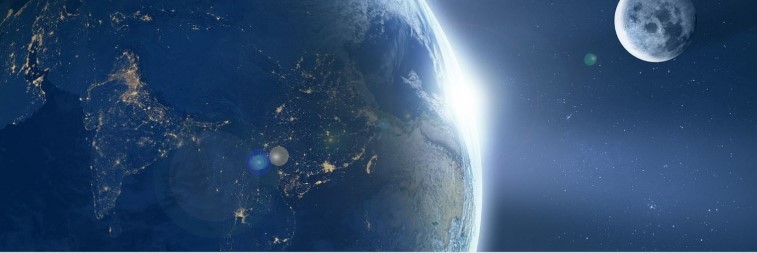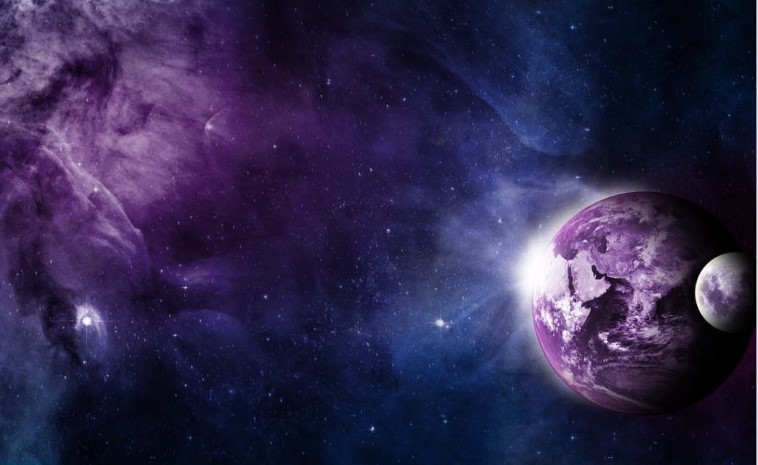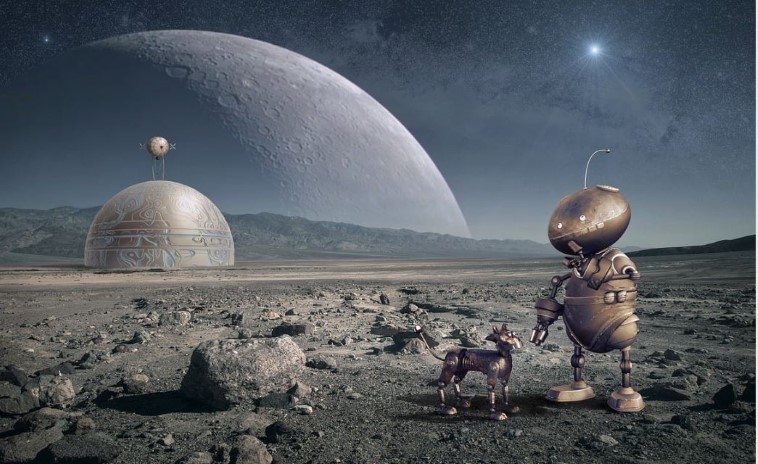The origin of the Moon: Three theories worth knowing

It can be said with certainty that the Moon has been an object of interest and study for people since the earliest days. This is understandable, if we take into account that it is our closest celestial neighbor, and next to the Sun, it is the most dominant object in the sky. But what has accelerated the study of the Moon in modern times originates from completely different reasons. Let’s find out why.
Although it is only one of over 160 known natural satellites that revolve around the planets of the solar system, and among them only the fifth largest, it is still unique in something: it has an orbital angular momentum that is greater than the Earth’s rotational angular momentum, and no other planet has a satellite whose mass is so comparable to the mass of the primary body.
A quarter of the size of the Earth, the Moon has an eighth of its mass and a sixth of its gravity. It revolves around the axis and around the Earth in constant periods, in a nearly circular orbit at an average distance of about 385,000 km.
There are three basic theories that try to explain all these intriguing properties and explain the origin of the Moon.

The earliest hypothesis talked about the binary system of the Earth and the Moon, according to which the two bodies were formed from a single mass of interstellar gas and dust. It could have been about 4.8 billion years ago.
Such a process of creation was supposed to imply similar chemical and physical properties, and at the beginning of the 20th century, most scientists abandoned this idea, since the relatively large mass of the Moon was not in accordance with the difference in the density of these two bodies, as well as due to other important dynamic reasons.
Then, in 1954, the American astronomer of Dutch origin, Gerard Pieter Kuiper (1905-1973), modified and revived this theory. According to this, the Moon and the Earth were created as twin planets surrounded by gaseous matter, whose radioactivity, at the time of the formation of the solar system, was much higher, creating such heat that the core of the Moon melted, and a good part of its matter and dust was thrown towards the Earth.
Even before the presentation of Kuiper’s thesis about double planets, the famous British astronomer and mathematician from Cambridge, George Howard Darwin (1845-1912), presented an extremely attractive idea in 1878 by studying the tidal effects of the Earth and the Moon. He determined that 4 billion years ago the Earth rotated around its axis much faster than it does today and that the day on it then lasted only 5 hours,

The young Darwin concluded that the Moon simply detached from the thin and rapidly rotating masses of the Earth, settling on today’s path and maintaining today’s rotation period as a result of the gravitational interactions of the two bodies.
Prominent Cambridge geologist, Osmond Fisher (1817-1914), established and announced in 1892 that the Pacific Basin is supposedly the place from which the Moon separated, and given that material from the Earth’s mantle was used during its formation, there was supposed to explain the small specific density of our satellite. However, the Darwin-Fisher theory failed to explain the inclination of the Moon’s path relative to the Earth’s equator.
During the thirties, the English astronomer and geophysicist, Harold Jeffreys (1891-1989), mathematically proved that due to the braking forces caused by internal resistance in the earth’s crust, any material separation from it is impossible.
At the beginning of the fifties of the last century, the American chemist and Nobel laureate, Harold Clayton Urey (1893-1981) developed a third theory, which soon became widely accepted.
They believed that the Moon was formed from interplanetary gases and dust somewhere in the depths of the solar system, and that due to some anomaly, which could have occurred, for example, due to the impact of some kind of asteroid, it simply entered the attractive field of the Earth and was trapped there by its gravity, so that over time it would settle on today’s trajectory.
According to this theory, the Moon, due to the effect of the tides, instead of moving away from the Earth, moved even closer. The plane of the Moon’s path gradually tilted until it was vertical to the Earth’s path. That process continued; the plane of the path tilted further and further, until its original “backward” motion became a west-east motion, and the frictional effects of the tides caused it to move further and further away from Earth.
In one part, this hypothesis is quite acceptable, but the statement that the Moon initially moved along its path in the east-west direction, that its plane constantly tilted, straightened and continued tilting until the Moon found itself on an elliptical path, remains unclear.

Proponents of this theory could not explain the discrepancy between the Moon’s current trajectory and the time period required for it. According to this theory, the Moon should not be older than a billion years, which turned out to be incorrect, because the mountain ranges on the Moon are much older. The “Apollo” space program brought to Earth enough stones that confirmed the inaccuracy of this theory.
And then in 1975, the theory of William K. Hartmann and Donald R. Davis was published in the American scientific journal “Ikarus”, which represents today’s leading theory about the origin of the Moon. According to it, about 4.5 billion years ago, a large celestial body, the size of Mars, hit the semi-molten Earth, and the Moon was created from the ejected rocky remains.
It should be noted that even in the traditions of the ancient Greeks there were stories about the times when “the Earth was without the Moon”, which was also written about by the famous thinkers Democritus and Anaxagoras.
However, the story of life on the Moon became really relevant only when the telescope was perfected in the 17th century. Thus, it is known that in 1780 the famous astronomer Sir William Herschel said “it is almost certain that the Moon is inhabited…”

When space exploration began in the 1950s, scientists increasingly agreed that there were no organic substances on the Moon’s surface, but that certain spores might be hiding in some protected locations. Also, there are minimal chances that such traces are hidden somewhere below the surface as remnants of some prehistoric times when the Moon had some kind of reduced atmosphere or was contaminated with material from Earth.
We should not forget that for eons the Moon has been acting as a gravitational trap for meteorite material from the cosmos, and that the discovery of any, even the most primitive, spores would provide strong support for the panspermia hypothesis. Unfortunately, all previous research has given negative answers.
Want to read more about the universe? Visit our blog!

